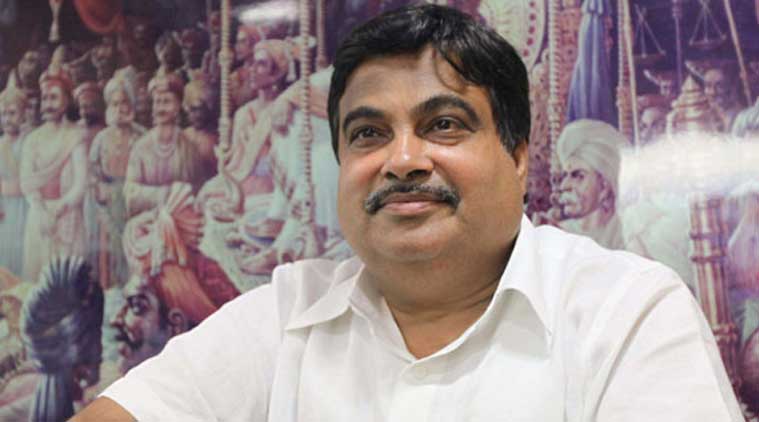Stay updated with the latest - Click here to follow us on Instagram
New Maharashtra govt, Centre to unveil projects for developing Mumbai’s defunct port land
The panel has left the task of framing a policy for rehabilitating the thousands of slum residents, who survive on informal jobs allied to port activities.
 Gadkari held a meeting with the head of the expert land development committee appointed by him three months ago as well as with the Mumbai Post Trust (MbPT) chairman. (Source: PTI)
Gadkari held a meeting with the head of the expert land development committee appointed by him three months ago as well as with the Mumbai Post Trust (MbPT) chairman. (Source: PTI)
With a BJP government assuming office in Maharashtra, the new state government and the Centre are set to unveil one of the biggest showcase projects for the country’s financial capital Mumbai with plans for developing 1800 acres of defunct port trust land along the city’s eastern coastline.
The political expediency, to set in motion these ambitious plans as soon as the new government gets down to business in the state, is apparent from the fact that this week Nitin Gadkari, Union Minister for Shipping and Transport, held a meeting relating to this with the head of the expert land development committee appointed by him three months ago as well as with the Mumbai Post Trust (MbPT) chairman, according to people with direct knowledge of the issue.
The expert panel’s draft report, which will be submitted to the central minister soon after including Gadkari’s feedback, paves the way for decongesting Mumbai of its heavy traffic and infusing vast swathes of green open spaces. The draft report also provides for three additional north-south mass rapid transit corridors and dedicated zones meant for entertainment, heritage-ecology conservation, businesses and employment generation. He further suggested that more land should be released for development, if necessary, by curtailing the loss making bulk cargo operations while continuing with the profitable offshore oil and petroleum transport.
According to sources, the Central government will amend the Major Port Trusts Act, 1963, so as to allow the MbPT to diversify its activities beyond port operations to include land development. The amendment will also make way for setting up a Mumbai Port Land Development Authority (MPLDA) that will be in-charge of actualizing the conceptual plans sketched out by the panel.
The under-utilized 28 km-long stretch of land, from Colaba to Wadala in South Mumbai, is the largest land mass to made available for development in densely populated and land-starved Mumbai since it lost out on an opportunity to capitalize on 600 acres of erstwhile mill land plots more than a decade ago. “If port operations are rationalized as per the ministry’s suggestions, it will free anywhere between 1200 and 1400 acres of land in Mumbai,” said a panel member.
The Union minister is believed to have agreed to most of the options presented by the panel in its draft report. The panel’s suggestions includes creating a Bus Rapid Transport System, Metro rail and inter and intra-city water transport project along the stretch. These three proposed modes would be connected to the existing north south transport corridors, namely central, harbour and western railways, through intermodal transport.
As against the existing 0.85 per cent open space, the panel has suggested that 30 per cent of total land be reserved for green lungs. To boost Mumbai’s image as an International Finance Centre, the committee has suggested dedicated zones for promoting entrepreneurship, businesses and export. A few hundred acres will be used for water theme tourist attractions such as sea world/ aquarium, waterfront pavillons, maritime museum, floating hotel and restaurants, sea food courts and helipads. Vast stretches of waterfront land will be made accessible to the public by creating promenades while some sections will be used to create marinas and an international cruise terminal. Among the various heritage conservation projects would be the restoration of the three-century-old Sewri fort where a viewing gallery would be created overlooking the mudflats that is the natural habitat for flamingos.
The panel has also detailed ways of assembling land parcels that is presently sub-optimally used. Almost half the land has lease-held properties, majority of which have expired while the remaining house derelict warehouses, workers’ quarters and storage facilities. The panel has left the task of framing a policy for rehabilitating the thousands of slum residents, who survive on informal jobs allied to port activities, to the proposed MPLDA.
While emphasizing that no land parcel should be sold outright, the panel has presented various financing models including Build-Operate-Transfer (BOT), viability gap funding, international funding and money raised through user charges or rents.







